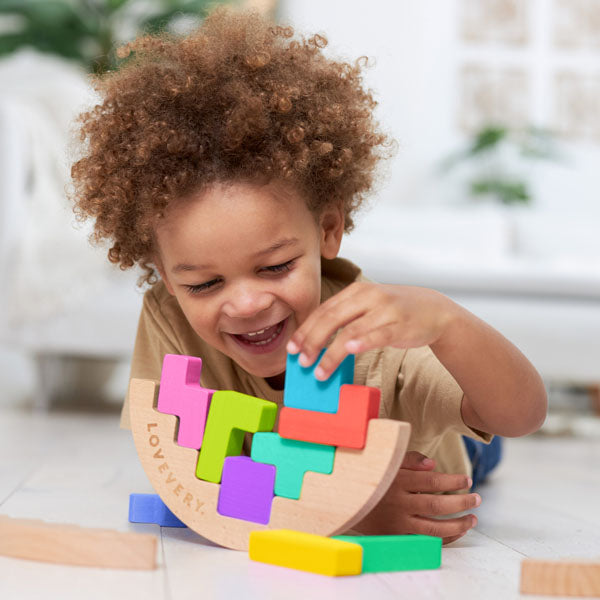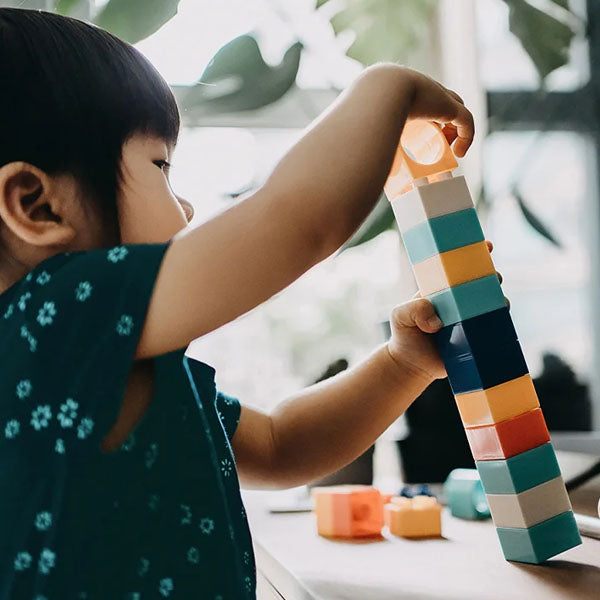Smart Toys for Smart Kids: Enhancing Learning Through Play
In the digital age, the landscape of children's toys is rapidly evolving to meet the demands of an increasingly tech-savvy generation. However, amidst the sea of flashy gadgets and electronic devices, there exists a category of toys known as "smart toys" that offer more than just entertainment—they provide valuable opportunities for learning and skill development. In this blog post, we'll explore the world of smart toys and how they can enhance learning through play, fostering the intellectual growth and curiosity of today's children.
What Are Smart Toys?
Smart toys are interactive playthings that incorporate technology to engage children in educational activities and experiences. From robotics kits to coding games and interactive learning tools, these toys leverage the power of technology to stimulate curiosity, creativity, and critical thinking. Unlike passive forms of entertainment, smart toys encourage active participation and hands-on exploration, making learning a fun and immersive experience for kids.
Benefits of Smart Toys:
The benefits of smart toys extend far beyond mere entertainment—they offer a wide range of cognitive, social, and emotional benefits for children. By engaging in interactive play, kids develop problem-solving skills, spatial reasoning, and logical thinking as they navigate challenges and puzzles presented by the toys. Moreover, smart toys promote creativity and imagination, allowing children to experiment, design, and innovate in a supportive and engaging environment.
Furthermore, smart toys provide opportunities for learning across various subjects and disciplines, from STEM (Science, Technology, Engineering, and Mathematics) to language arts and beyond. Whether it's building robots, solving coding puzzles, or exploring scientific concepts through interactive experiments, these toys inspire curiosity and a love for learning in children. Additionally, smart toys foster collaboration and teamwork as kids work together to solve problems and achieve common goals, promoting social skills and communication abilities.
Examples of Smart Toys:
Coding Robots: Coding robots like Sphero and Dash & Dot introduce children to programming concepts through interactive games and activities. By coding commands and sequences, kids learn computational thinking and problem-solving skills while having fun.
Interactive Learning Tablets: Interactive learning tablets like LeapFrog and VTech offer educational games, eBooks, and activities designed to reinforce essential skills such as literacy, numeracy, and critical thinking. These tablets provide personalized learning experiences tailored to each child's abilities and interests.
STEM Kits: STEM kits encompass a wide range of educational toys and activities focused on science, technology, engineering, and mathematics. From physics experiments to engineering challenges and circuit-building projects, these kits inspire creativity and innovation while teaching fundamental concepts in STEM disciplines.
Augmented Reality (AR) Toys: AR toys like Osmo and Merge Cube blend physical play with digital technology to create immersive learning experiences. By overlaying virtual elements onto the real world, these toys encourage exploration, creativity, and problem-solving in a unique and interactive way.
Smart toys represent the future of play, offering children the opportunity to learn and grow in ways that were once unimaginable. By incorporating technology into interactive play experiences, these toys inspire curiosity, creativity, and critical thinking while fostering essential skills for success in the 21st century. As parents and educators, let's embrace the potential of smart toys to enhance learning through play and empower the next generation of innovators, problem-solvers, and lifelong learners.
What Are Smart Toys?
Smart toys are interactive playthings that incorporate technology to engage children in educational activities and experiences. From robotics kits to coding games and interactive learning tools, these toys leverage the power of technology to stimulate curiosity, creativity, and critical thinking. Unlike passive forms of entertainment, smart toys encourage active participation and hands-on exploration, making learning a fun and immersive experience for kids.
Benefits of Smart Toys:
The benefits of smart toys extend far beyond mere entertainment—they offer a wide range of cognitive, social, and emotional benefits for children. By engaging in interactive play, kids develop problem-solving skills, spatial reasoning, and logical thinking as they navigate challenges and puzzles presented by the toys. Moreover, smart toys promote creativity and imagination, allowing children to experiment, design, and innovate in a supportive and engaging environment.
Furthermore, smart toys provide opportunities for learning across various subjects and disciplines, from STEM (Science, Technology, Engineering, and Mathematics) to language arts and beyond. Whether it's building robots, solving coding puzzles, or exploring scientific concepts through interactive experiments, these toys inspire curiosity and a love for learning in children. Additionally, smart toys foster collaboration and teamwork as kids work together to solve problems and achieve common goals, promoting social skills and communication abilities.
Examples of Smart Toys:
Coding Robots: Coding robots like Sphero and Dash & Dot introduce children to programming concepts through interactive games and activities. By coding commands and sequences, kids learn computational thinking and problem-solving skills while having fun.
Interactive Learning Tablets: Interactive learning tablets like LeapFrog and VTech offer educational games, eBooks, and activities designed to reinforce essential skills such as literacy, numeracy, and critical thinking. These tablets provide personalized learning experiences tailored to each child's abilities and interests.
STEM Kits: STEM kits encompass a wide range of educational toys and activities focused on science, technology, engineering, and mathematics. From physics experiments to engineering challenges and circuit-building projects, these kits inspire creativity and innovation while teaching fundamental concepts in STEM disciplines.
Augmented Reality (AR) Toys: AR toys like Osmo and Merge Cube blend physical play with digital technology to create immersive learning experiences. By overlaying virtual elements onto the real world, these toys encourage exploration, creativity, and problem-solving in a unique and interactive way.
Smart toys represent the future of play, offering children the opportunity to learn and grow in ways that were once unimaginable. By incorporating technology into interactive play experiences, these toys inspire curiosity, creativity, and critical thinking while fostering essential skills for success in the 21st century. As parents and educators, let's embrace the potential of smart toys to enhance learning through play and empower the next generation of innovators, problem-solvers, and lifelong learners.




